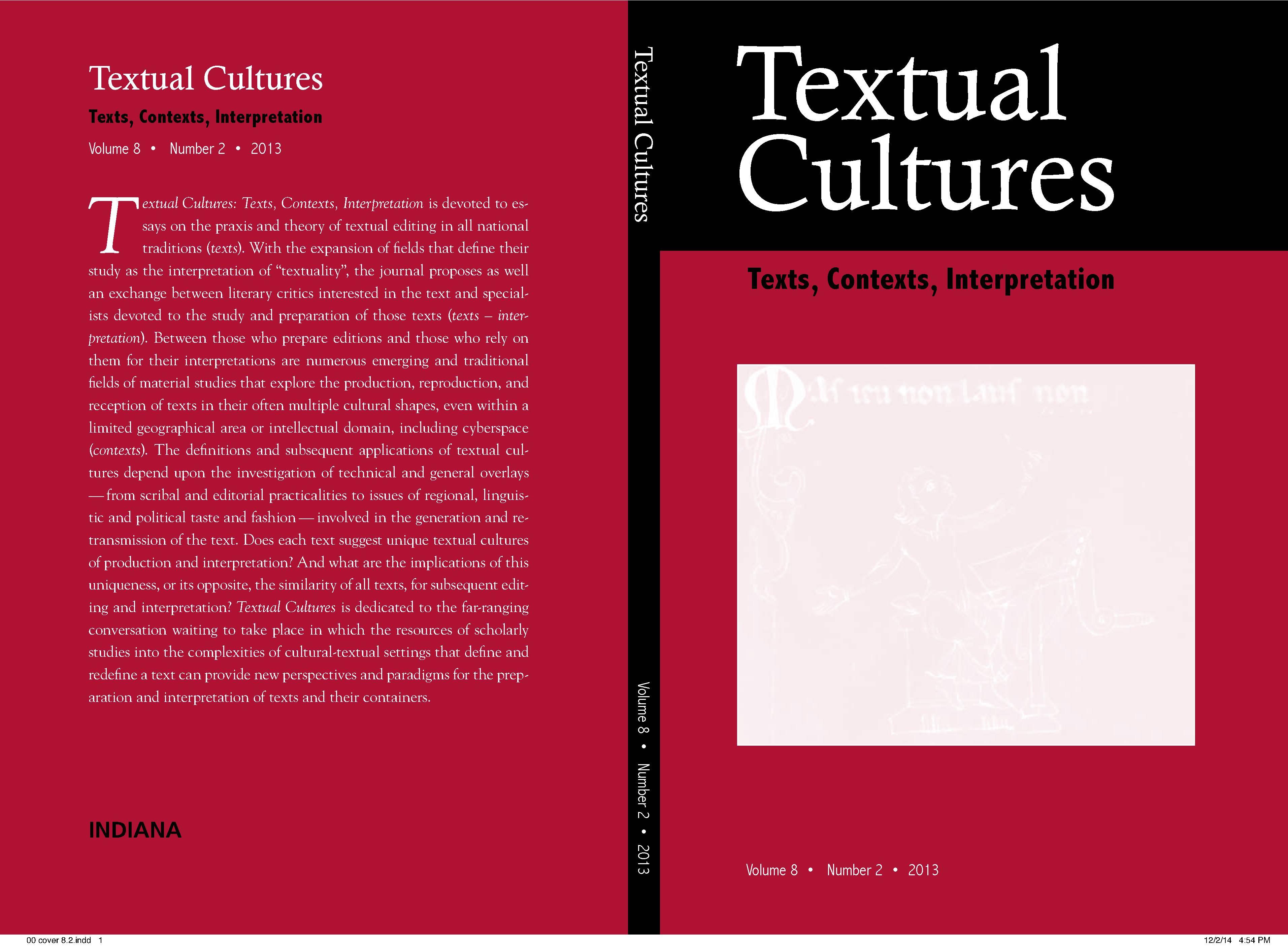Reflections on Paratextual Markers and Graphic Devices in Ur III Administrative Documents
Main Article Content
Abstract
Downloads
Article Details
Authors who publish with this journal agree to the following terms:
- Authors retain copyright and grant the journal right of first publication with the work simultaneously licensed under a Creative Commons Attribution License (see:http://creativecommons.org/licenses/by/3.0/us/) that allows others to share the work with an acknowledgment of the work's authorship and initial publication in this journal.
- Authors warrant that their submission is their own original work, and that they have the right to grant the rights contained in this license. Authors also warrant that their submission does not, to the best of your knowledge, infringe upon anyone's copyright. If the submission contains material for which an author does not hold the copyright, authors warrant that they have obtained the unrestricted permission of the copyright owner to grant Indiana University the rights required by this license, and that such third-party owned material is clearly identified and acknowledged within the text or content of their submission.
- Authors are able to enter into separate, additional contractual arrangements for the non-exclusive distribution of the journal's published version of the work (e.g., post it to an institutional repository or publish it in a book), with an acknowledgment of its initial publication in this journal.
References
Dahl, Jacob L. 2007. The Ruling Family of Ur III Umma: A Prosopographical Analysis of a Provincial Elite Family in Southern Iraq ca. 2100–2000 bc. Leiden: PIHANS 108.
Garfinkle, Steven J. 2008. “Was the Ur III State bureaucratic? Patrimonialism and Bureaucracy in the Ur III period”. In The growth of an Early State in Mesopotamia: Studies in Ur III administration (Proceedings of the First and Second Ur III Workshops at the 49th and 51st Rencontre assyriologique internationale, London July 10, 2003 and Chicago July 19, 2005), edited by Steven J. Garfinkle and Justin Cale Johnson, 55–61. Madrid: Consejo Superior de Investigaciones Científicas.
Genette, Gérard 1997, Paratexts: Thresholds of Interpretation. Trans. Jane E. Lewin. Cambridge: Cambridge University Press.
Hallo, William W. 1953. The ensi’s of the Ur III Dynasty. PhD thesis, Chicago Ori-ental Institute.
Hanks, William F. 1989, “Text and Textuality”. Annual Review of Anthropology 18: 95 –127. htt p://d x.doi.org/10.1146/a n nurev.a n.18.10 0189.0 0 0523.
Hattori, Atsuko 2001. “Sealing Practices of Ur III Nippur”. In Seals and Seal Impres-sions, Proceedings of the XLV Rencontre Assyriologique Internationale, edited by Wil-liam W. Hallo and I. J. Winter, 71–99. Bethesda, MD: CDL Press.
Hunger, Hermann 1968. Babylonische und assyrische Kolophone. Neukirchen-Vluyn: Verlag Butzon & Berker Kevalaer.
Korpel, Marjo C.A. and Josef M. Oesch (eds.) 2005. Layout Markers in Biblical Man-uscripts and Ugaritic Tablets. Pericope 5 - Scripture as written and read in antiquity. Leiden: Brill.
Korpel, Marjo C.A., Joseph M. Oesch and Stanley E. Porter (eds.) 2007. Method in Unit Delimitation. Pericope 6 - Scripture as written and read in antiquity. Leiden: Brill.
Kraft, Robert 2007. “Para-mania: Beside, Before and Beyond Bible Studies”. Journal of Biblical Literature 126: 3 –27.
Leichty, Erle 1964. “The Colophon”. In Studies Presented to A. Leo Oppenheim, edited by Robert D. Biggs and J. A. Brinkman, 147–55. Chicago: Oriental Institute.
Postgate, John Nicholas 1986. “Middle Assyrian tablets: the instruments of bureau-c r a c y ”. Altorientalische Forschungen 13: 10 –39. htt p://d x.doi.org/10.1524/aofo.1986.13.12.10.
———. “System and style in three Near Eastern bureaucracies”. In Economy and Poli-tics in the Mycenaean Palace States. Proceedings of a Conference held on 1–3 July 1999 in the Faculty of Classics, Cambridge, edited by Sofia Voutsa k i and John Killen, 181–94. Cambridge: Cambridge Philological Society 27.
———. 2014. Bronze Age Bureaucracy. Writing and the Practice of Government in Assyria. Cambridge: Cambridge University Press.
Proust, Christine 2012. “Reading Colophons from Mesopotamian Clay-Tablets Deal-ing with Mathematics”. NTM Zeitschrift für Geschichte der Wissenschaften, Technik und Medizin 20/3, 123–56. http://dx.doi.org/10.1007/s00048-012-0071-z.
Reichel, Clemens 2003. “Appendix: Sealing practice”. In: Markus Hilgert, Drehem Administrative Documents from the Reign of Amar-Suena (Oriental Institute Publica-tions 121),603–24. Chicago: The Oriental Institute.
Sallaberger, Walther 1999. “Ur III-Zeit”. Mesopotamien: Akkade-Zeit und Ur III-Zeit, Orbis Biblicus et Orientalis 160/3, 121–392. Freiburg: Universitätsverlag.
Such-Gutiérrez, Marcos 2008. “Gesiegelte Urkunden der königlichen Viehver-waltung von Drehem und die Frage der Linienunterteilung und Siegelung dieser Tafeln”. In On the Third Dynasty of Ur: Studies in honor of Marcel Sigrist, edited by Piotr Michalowski, 201–16. Boston: American Schools of Oriental Research.
Taylor, Jonathan 2011 “Tablets as artefacts, scribes as artisans”. In Oxford Hand-book of Cuneiform Culture, edited by Karen Radner and Eleanor Robson, 5–31. Oxford: Oxford University Press.
Tversky, Barbara 2001. “Spatial Schemas in Depictions”. In Spatial Schemas and Abstract Thought, edited by Merideth Gattis, 79–112. Cambridge MA: MIT Press.
Veldhuis, Niek 1999. “Reading the Signs”. In All Those Nations . . . , Cultural Encounters within and with the Near East: Studies Presented to Hans Drijvers at the Occasion of His Sixty-fifth Birthday by Colleagues and Students, edited by Herman L. J. Va n s t i p h o u t, with the assistance of Wout J. va nBekkum, Geert Jan H. va nGelder and Gerrit Jan Reinink, 161–74. Groningen: Styx Publications.
Wagensonner, Klaus 2009. “Non-textual markers or pseudo-written references. Some glimpses from the Mesopotamian field”. In Non-Textual Marking Sys-tems, Writing and Pseudo Script from Prehistory to Modern Times, edited by Petra Andrássy, Julia Budka and Frank Kammerzell, 33–67. Göttingen: Seminar für Ägyptologie und Koptologie.
